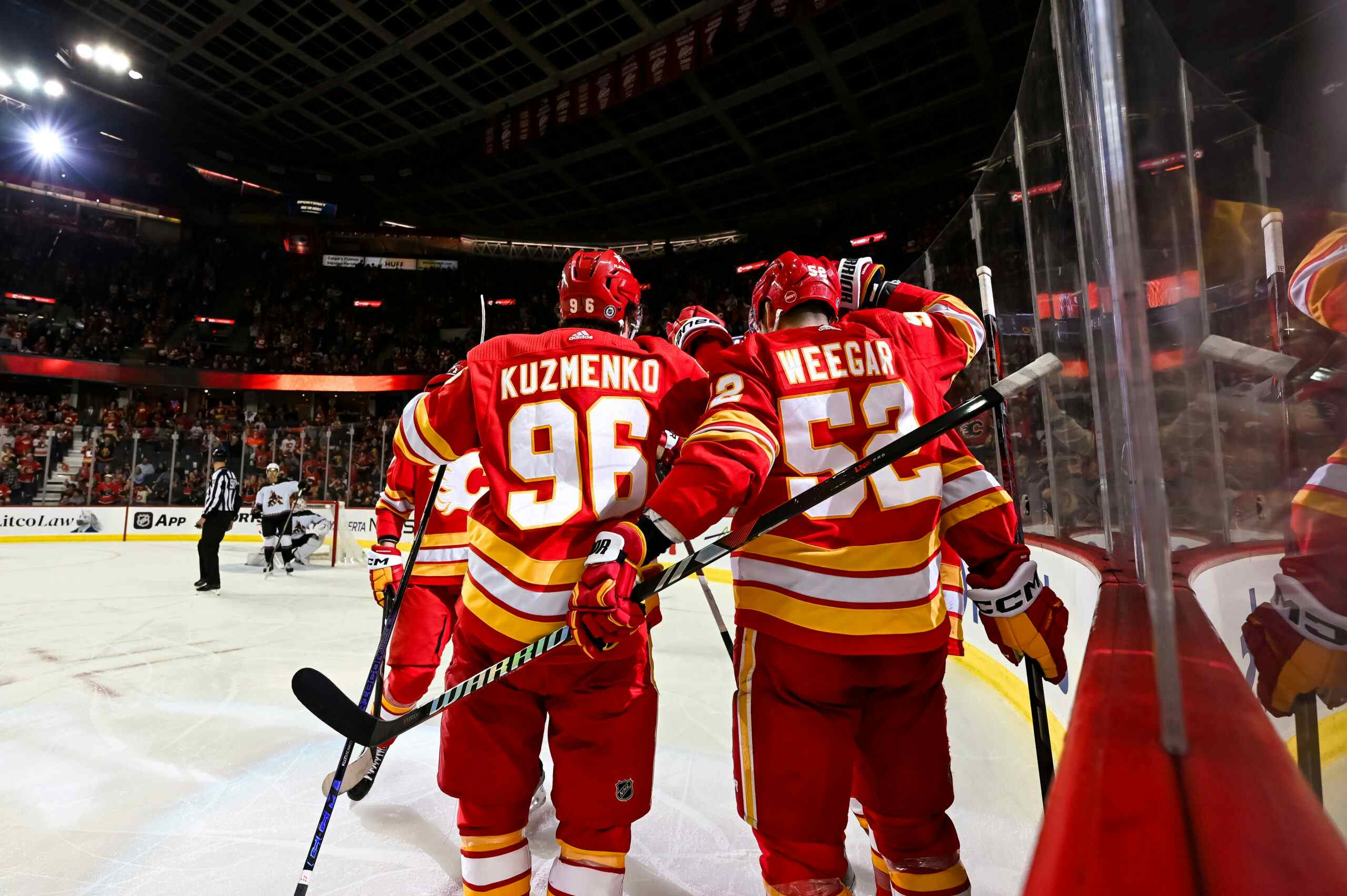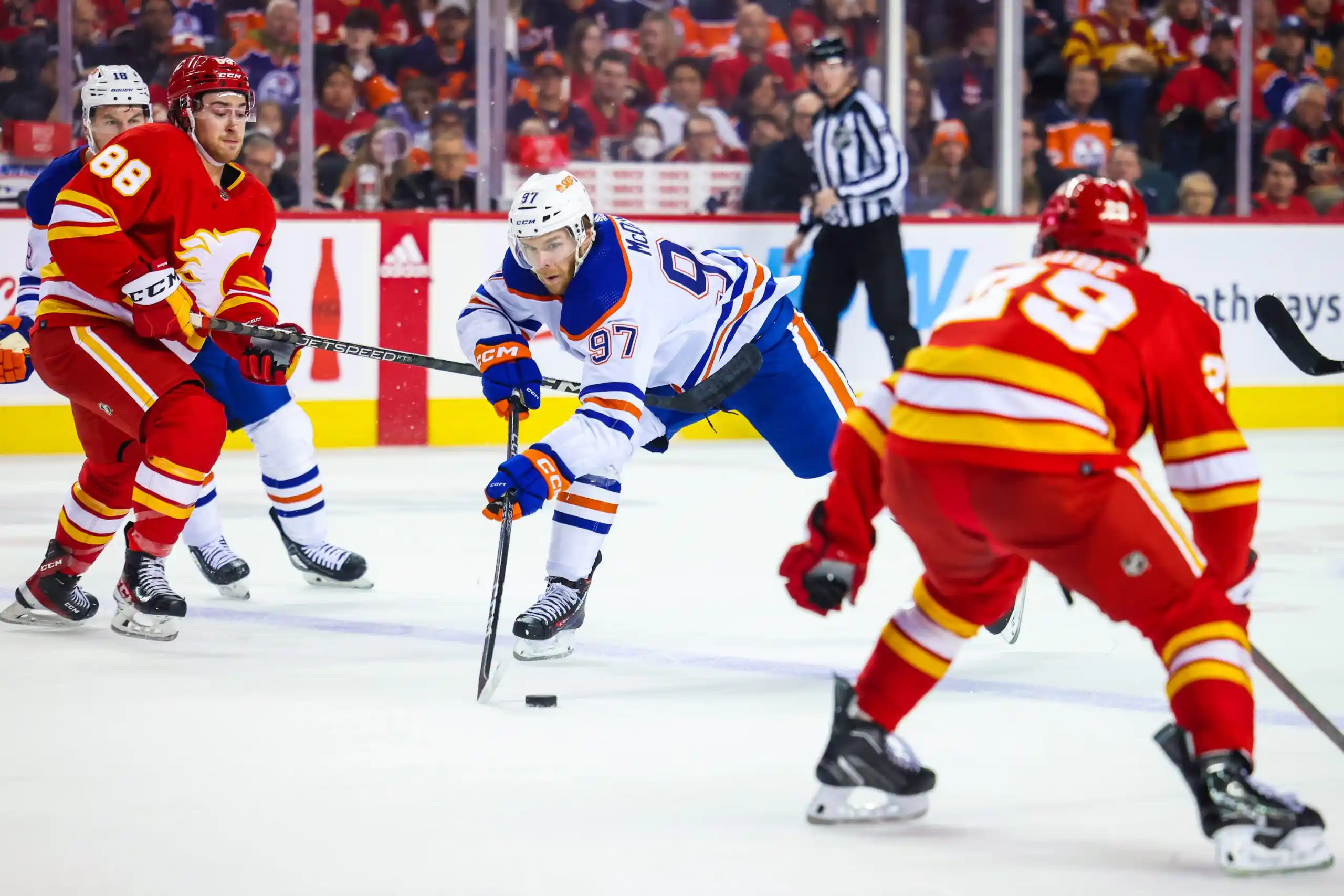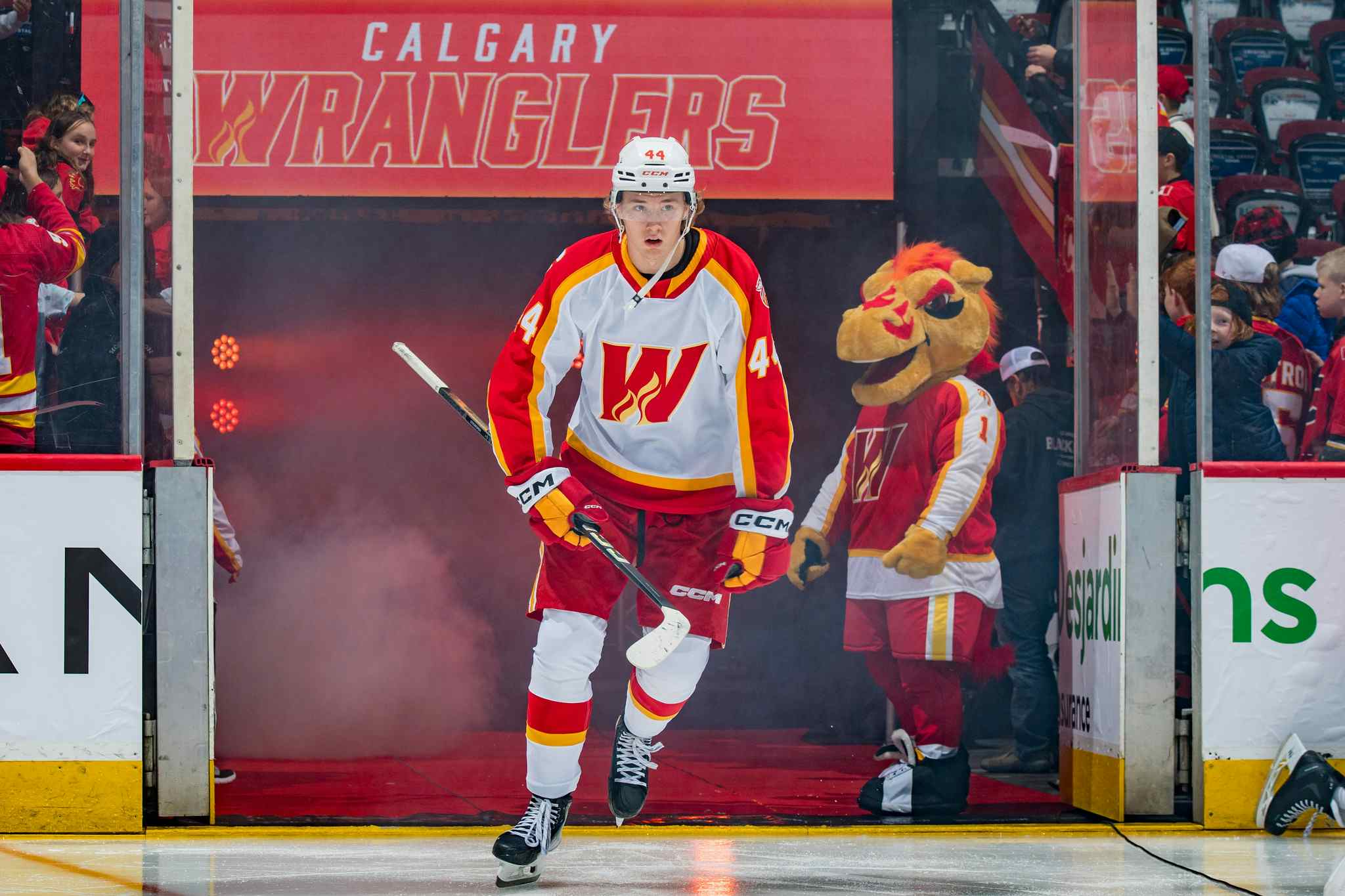Icons, trades and the ghost of 2004
By Ryan Pike
11 years agoOur own Nation overlord Kent Wilson recently contributed to Puck Daddy’s Essentials project, listing the essential moments, players and other details about the Calgary Flames. While Kent’s choice of the acquisition of Jarome Iginla from the Dallas Stars was a pretty good one, I found myself thinking back to 1999.
The Flames were in rough shape that year. They were ten seasons removed from their Stanley Cup win and, despite all the time that had passed, were still fruitlessly trying to recreate that juggernaut 1989 squad. However, the economics of the NHL had gotten in the way and the Flames were forced to pick and choose which members of the 1989 roster they would retain. By the end of it, the only member left was Theoren Fleury, who won the Cup as a rookie.
With only one man of the championship team left standing, and the economics of the NHL tightening more and more on the club’s resources, the Flames made a bold choice. Instead of paying what they had to in order to retain Theoren Fleury – their only remaining connection to 1989 – they let him go.
On February 28, 1999, the Calgary Flames traded Fleury and winger Chris Dingman to the Colorado Avalanche for Rene Corbet, Wade Belak, prospect Robyn Regehr and a draft pick (which they used to pick Jarret Stoll). Three months shy of a decade after their Stanley Cup win, the Flames finally stopped paying homage to that team by attempting to re-create itself in its image. The departure of Fleury was a painful one for Flames fans – not only was he the last vestige of their golden age, he was the last truly recognizable name on the roster. The deal with Colorado left the club the with next to nothing – a kid named Jarome Iginla who had some promise and a rag tag group of guys. It was the peak of the dreaded "young guns" era for the franchise, an epoch of unending infamy in Calgary. Of course, the deal also meant the acquisition of a future pillar of the team (Regehr) and so was one of the painful, but ultimately necessary steps in re-making the club.
Much of the damage had already been done. Prior to 1999, the Flames saw Cliff Fletcher replaced with his erstwhile protege, former player and head coach Doug Risebrough. Trying to emulate Fletcher, Risebrough was promptly fleeced in a massive trade with Toronto – the same kind of trade that Fletcher routinely used to build up his roster with young talent. European talents like Hakan Loob and Sergei Makarov were replaced by Robert Reichel and German Titov. Terry Crisp and Bob Johnson were succeeded as coach by Dave King and Pierre Page, guys with very similar pedigrees. Western Canadian goaltender Mike Vernon was replaced by Western Canadian goaltender Trevor Kidd. It all made perfectly logical sense and fell into a very similar plan as had built the 1989 team. It just didn’t work out and by the time Fleury was put on the auction block, the club couldn’t have been saved by his remaining – even if they could have afforded to keep him.
Championships and near-misses are funny things. In 1986, the Flames were thoroughly trounced by the Montreal Canadiens and made several tweaks – including trading Brett Hull – in order to get to the Promised Land. But once the championship was won, its memory haunted the organization. Breaking ties with the 1989 roster removed the ghost and allowed the club to move forward.
As we eventually approach the start of the 2012-13 season, it’s been eight years since the 2004 Stanley Cup Finals appearance for the Flames. And much like the finals appearances in 1986 and 1989, the 2004 experience exists as a ghost haunting the ohalls of the Saddledome. The team still labours to find a centre for Jarome Iginla, now 35 years old. They still search for an acceptable back-up for Miikka Kiprusoff, let alone someone who can eventually fill his skates. Effective complementary players are still hard to find, and the team seems to never stop trying to replicate the grinding, mucking success of Ville Nieminen, Stephane Yelle, Shean Donovan and Marcus Nilson. More frustrating is the notion that, even if the Flames could effectively re-build the 2004 team brick-by-brick, the NHL game has changed so completely that there’s no guarantee that it would be a success on the ice.
In the interim of the two lock-out (2004 and the impending one this year), the Vancouver Canucks completely re-shaped their club, but remained contenders for the NW division title in all but one season. Their pillars and key players from 2004 – Ed Jovanovski, Dan Cloutier, Markus Naslund, Brendan Morrison, Mattias Ohlund, Matt Cooke, Brent Sopel – are gone, usurped or replaced via promotion or trade.
That the Flames organization, in contrast, retains two very visible reminders of their past glory on the ice – Jarome Iginla and Miikka Kiprusoff – to say nothing of Craig Conroy and Martin Gelinas in hockey operations is not necessarily good nor bad. All four men bring stellar resumes to their posts. They do, however, provide daily reminders of the one that got away and may unconsciously taint decision-making. And until they fully break ties with the past, manage to exorcise its demons, and find a way to adapt and evolve beyond the 2004 model, that season may continue to haunt the Calgary Flames.
Recent articles from Ryan Pike





